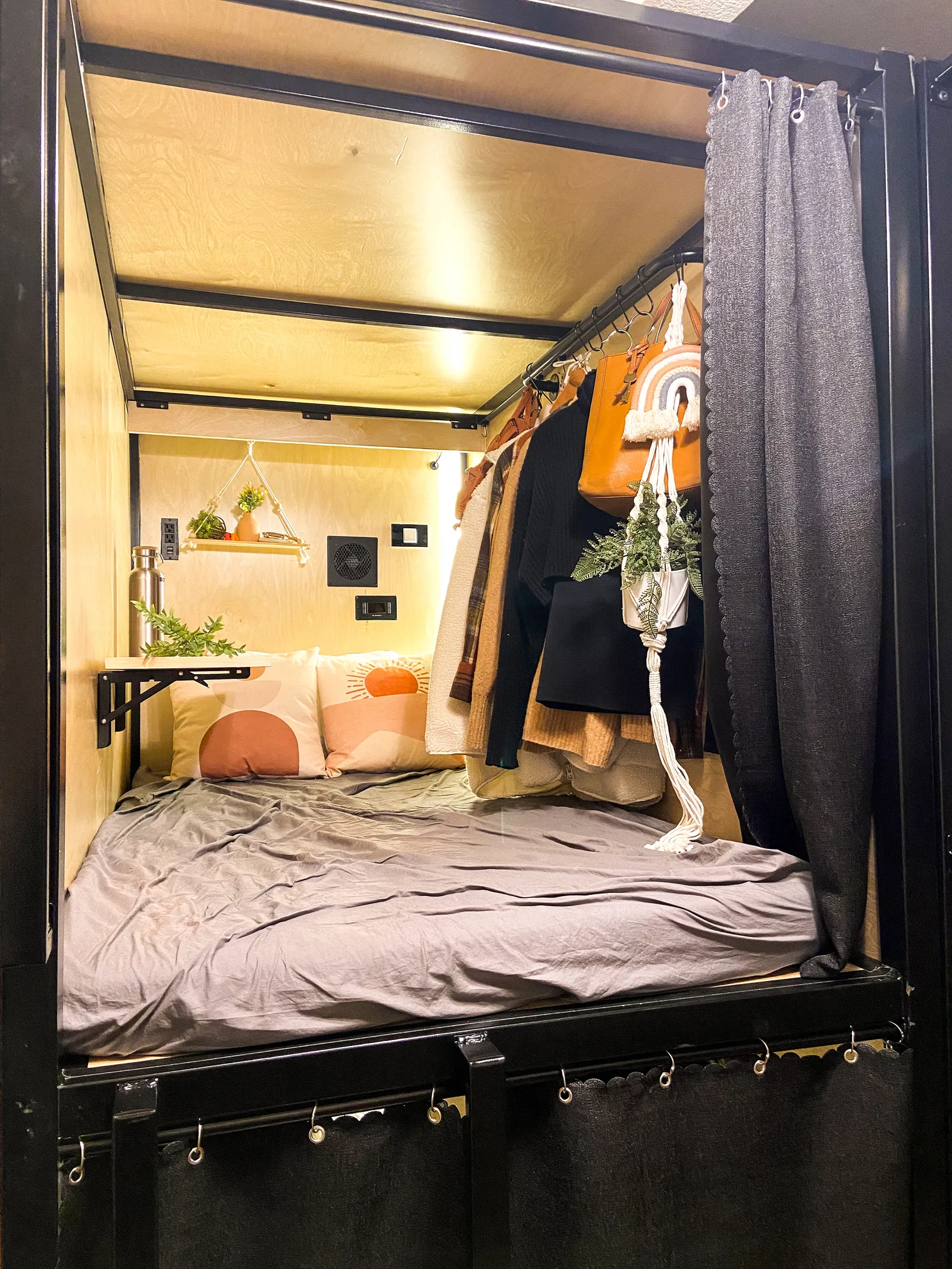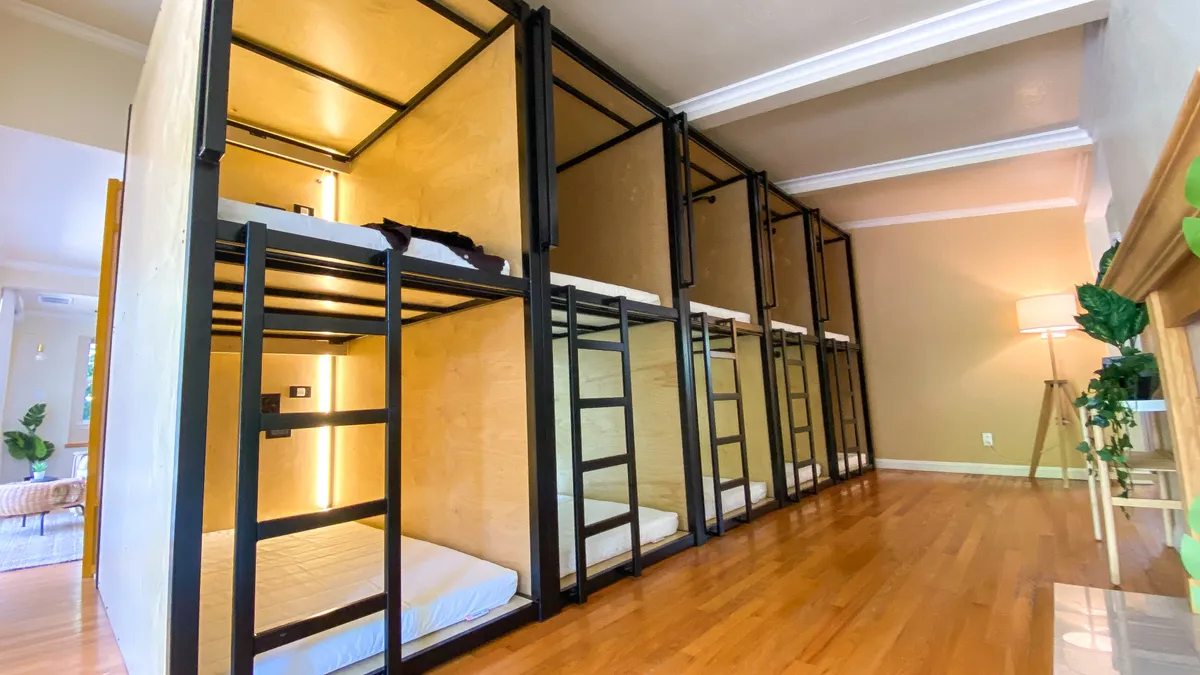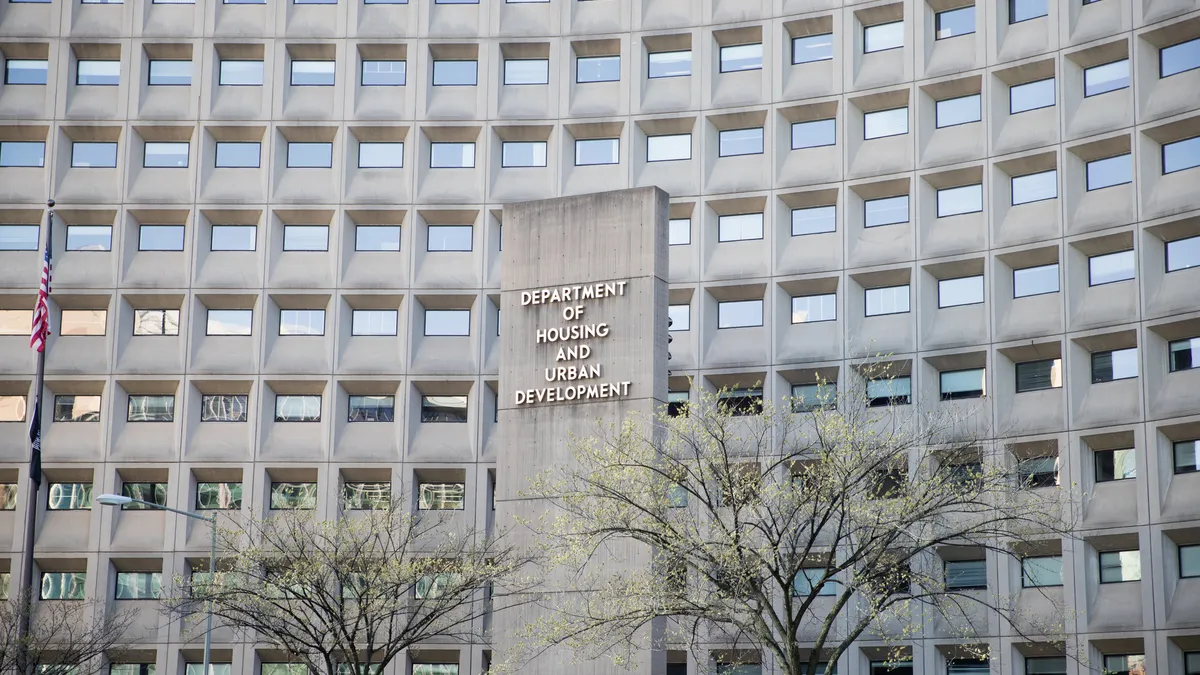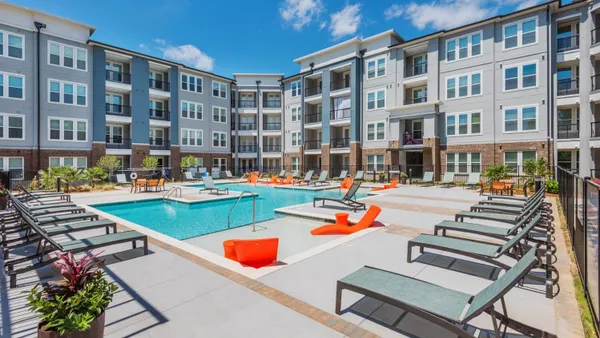As rents in swanky California towns climb to astronomical levels, averaging $3,468 in Palo Alto and $3,230 in San Francisco, according to Rent Cafe, signing up for sleeping pods in communal bunkrooms is becoming an increasingly viable — if controversial — housing solution.
Sleeping pods were introduced in 2012 by Los Angeles-based co-housing company PodShare as a low-cost alternative for travelers and digital nomads in Los Angeles. They have evolved to become a potential solution to the severe housing shortage gripping California and the rest of the nation. But do they represent dystopia or deliverance?
When PodShare opened a shared house in 2019 in San Francisco’s Tenderloin district offering 12 stacked sleeping pods for $1,200 per month, they were filled immediately, prompting Bay Area lifestyle website 7x7 to declare “a depressing new low in San Francisco housing.”
In August, Palo Alto-based Brownstone Shared Housing began renting 14 stacked cubes — each with a bed, shelf, clothes rack, electrical outlet, individual temperature and air-circulation controls and blackout curtain — in what had been a three-bedroom single-family house in Palo Alto’s Midtown neighborhood for $800 a month.
The shared home (shown above) is fully occupied, and Brownstone’s second house with six sleeping pods just north of Los Angeles in Bakersfield, which opened in April, is also full.
“Our only limit has been our ability to find time to screen applicants,” said James Stallworth, who co-founded Brownstone with Christina Lennox. “We certainly always have enough applications.”
If they pass the screening, which requires a written application and a video interview, Brownstone residents pay only monthly rent; no security deposit or first- and last-month’s rent is required. This makes the pods very attractive to Brownstone’s key demographic: single people under 35 who might be able to afford higher rent but haven’t had a chance to build up savings to pay deposits, Stallworth said.
Stallworth said Brownstone, which calls pods “the future of shared housing” on its website, plans to open its next shared house in New York City because “there’s so much need” for flexible, low-cost housing there.
Meeting a need
The pods aren’t without detractors. On Reddit, one user called them “the dystopian future,” and another compared them to living on a warship. Futurism staff writer Victor Tangermann called the pods “an extremely expensive prison cell.”
But no one can deny they’re meeting a real need. As Tangermann reported in the same article, “there simply isn’t any affordable housing available for the vast majority of low-income households in the Bay Area.”
In October 2021, 49% of Americans said the availability of affordable housing was a major problem in their local community, according to Pew Research, and the vacancy rate for rental units has fallen from about 10% in 2010 to 5.6% at the end of 2021.

Love them or hate them, the pods are not likely to go away any time soon.
Japan’s capsule hotels offering sleeping pods have been popular with business and budget travelers since the 1980s, and they’re spreading to other Asian countries as well as Europe. And in travel, the global market for airport sleeping pods is expected to reach $88 million by 2026, according to Global Industry Analysts.
With its successful evolution of this model into housing, PodShare, which now has six locations (five in Los Angeles in addition to the one in San Francisco), is considering ways to branch to other markets.
A ‘creative response’
For Jill Pable, a professor and chair of the Department of Interior Architecture and Design at Florida State University and project lead for the nonprofit Design Resources for Homelessness, which offers guidance for the design of facilities for homeless people, sleeping pods represent “an interesting outcome based on a whole series of new constraints and opportunities that are causing a lot of pain and anguish.”
“Certainly, the price of rentals and the availability of rentals with the housing crisis right now is prompting some of these more creative responses,” she said.
Pable’s concern with any housing solution is whether it can provide residents with dignity, empowerment, personal space and privacy. Pable considers privacy “a fundamental part of how we identify as human beings.”
Sleeping pods “are really playing with that in a big way,” she said, and bring up many questions:
“Is it OK that someone’s bed is the only private space they have? Where are they going to change clothes? How close is the bathroom? How public is the bathroom?”
In the end, Pable said, “to say anything is good or bad is a little unfair. For some groups of people, this might be right up their alley. Human beings are very gray in terms of what their needs are at different life stages.”












